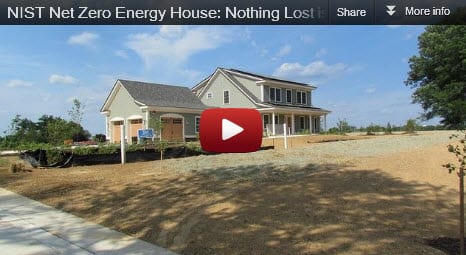
Energy efficient home to be tested by NIST
September 18, 2012NIST unveils new energy efficient home
Late last week, the U.S. Commerce Department’s National Institute of Standards and Technology (NIST) introduced a new house that is designed to test the limits of energy efficiency. The house is modeled to fit what NIST believes to be the stereotypical suburban U.S. home and will consume as much energy as these homes typically do. According to researchers, this energy efficient home will be capable of producing more electricity than it uses.
Home already shows promising potential
NIST had tested past incarnations of the energy efficient home over the past year. Researchers found that the home held vast potential in terms of conservation and have made improvements to its design and the way it uses electricity since the initial test phases. These improvements are expected to make significant cuts in the energy consumption of the home and thus reduce its impact on the environment and the energy costs faced by those living in the house.

Solar energy used to meet the house’s power needs
The two-story, four-bedroom home represents the latest in energy efficient construction. The house makes use of materials that meet the U.S. Green Building Council LEED Platinum standards and is also equipped with energy efficient appliances. The energy efficient home draws its power through a wide array of photovoltaic solar energy systems. The solar energy systems are enough to meet the home’s power needs, according to researchers.
Surplus electricity to be directed to local energy grid
The energy efficient home will be empty for its year-long study, but NIST researchers will be using a variety of computer models to simulate real living conditions. These will represent a family of four living in the home and making use of its various features on a daily basis. Because the home is designed to produce more energy than it uses, surplus electricity will be funneled into the local energy grid through the use of a smart energy meter. On days when the home’s energy needs cannot be met through solar power alone, the home will draw upon the local energy grid, just like its conventional counterparts.



 With over 15 years of reporting hydrogen news, we are your premier source for the latest updates and insights in hydrogen and renewable energy.
With over 15 years of reporting hydrogen news, we are your premier source for the latest updates and insights in hydrogen and renewable energy.